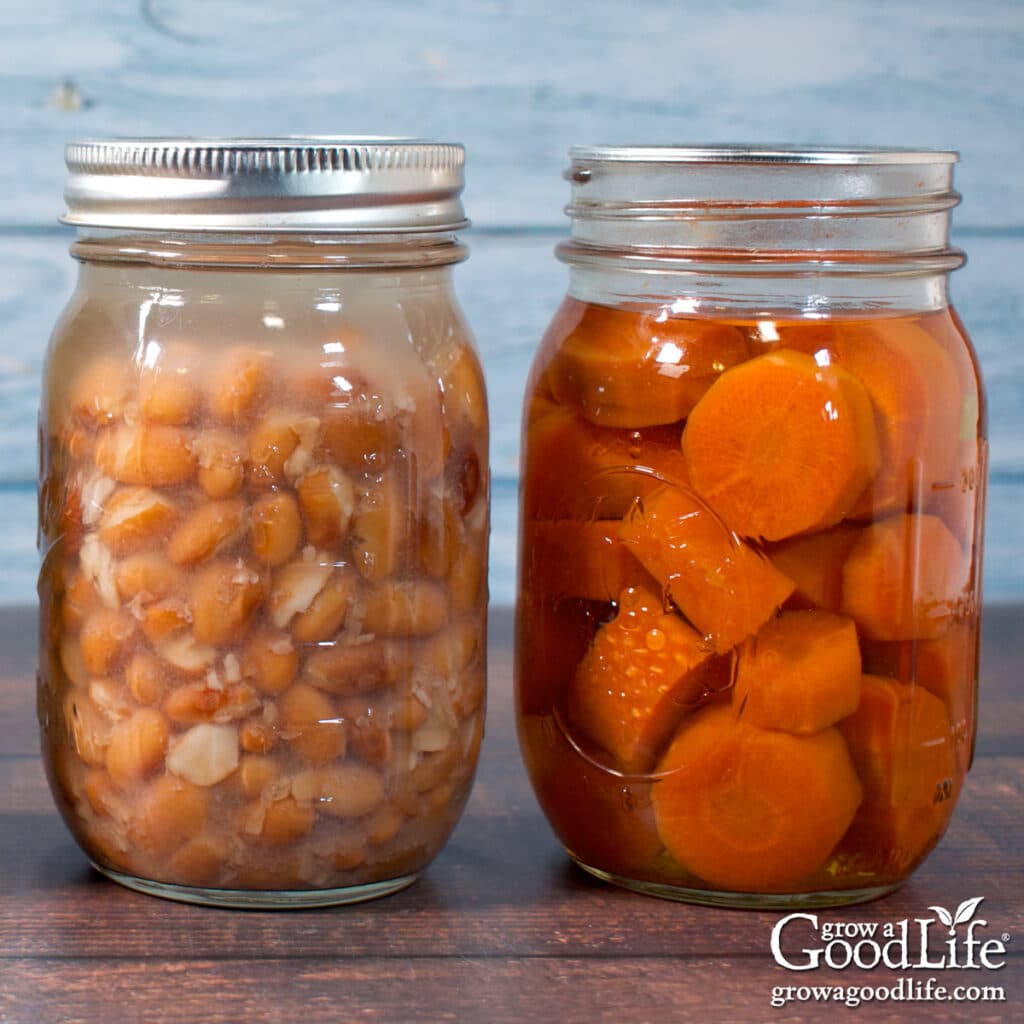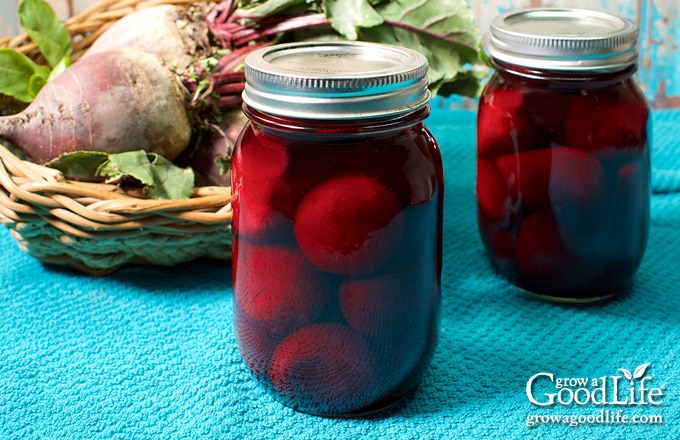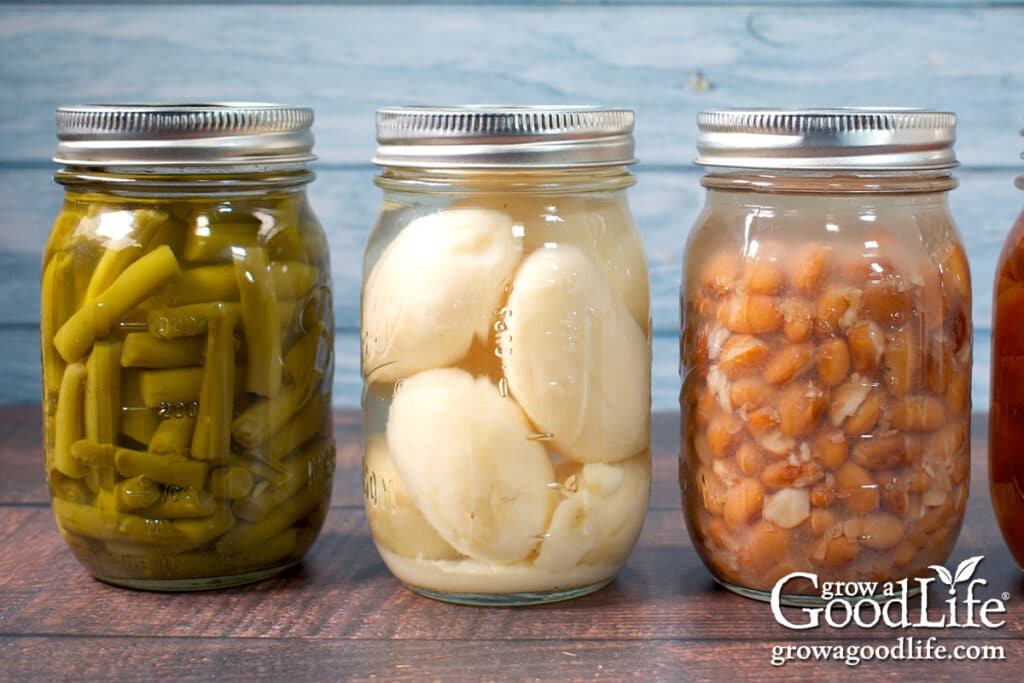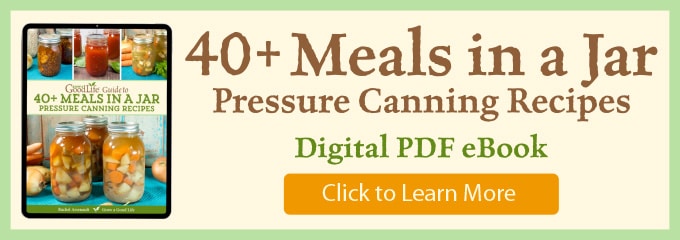Safe Tweaks for Pressure Canning Vegetables
This post may contain affiliate links, which means that I may receive a commission if you make a purchase using these links. As an Amazon Associate I earn from qualifying purchases.
Pressure canning vegetables? Learn safe ways to customize and add flavor while following tested pressure canning methods. Find out which tweaks are safe and avoid the ones that could risk food safety.

Pressure canning is the only safe method for preserving low-acid vegetables at home. Unlike high-acid foods like fruit or pickles, vegetables must be processed at high temperatures to eliminate the risk of botulism and other foodborne illnesses. Because of these safety concerns, tested recipes leave very little room for creative changes. But that doesn’t mean you’re stuck with bland jars.
If you’re wondering whether you can adjust your vegetable canning recipes to better suit your tastes, the answer is yes, but with care. In this guide, we will explain safe ways to modify pressure canning vegetable recipes and outline unsafe practices, allowing you to enhance flavor while ensuring food safety.
This guide is part of a series on safe canning substitutions, designed to help you understand which changes you can safely make to tested recipes without compromising food safety. For a broader look at substitutions, visit our Safe Substitutions to Home Canning Recipes page.
Why Safety Matters
Most vegetables are low-acid foods, meaning their natural pH is above 4.6. This creates the perfect environment for Clostridium botulinum, the bacteria responsible for botulism, a rare but potentially fatal illness. The only way to reliably destroy these spores is through pressure canning, which reaches temperatures higher than boiling water.
Even small changes, such as swapping ingredients, increasing the volume of low-acid foods, or altering jar size, can affect how heat flows through the jar. If the internal temperature doesn’t reach a high enough level for the required amount of time, bacteria may survive, making the food unsafe to eat. That’s why tested recipes are developed with strict guidelines for jar size, processing time, canner pressure, and ingredient ratios.

Safe Adjustments to Pressure Canning Vegetable Recipes
While pressure canning recipes must be followed closely to ensure food safety, there is still a little room for customization, mainly in ways that affect flavor rather than food chemistry or processing. Here are some ways to tweak vegetable canning recipes without compromising safety:
Omit or Reduce Salt
Salt is often included in pressure canning recipes for flavor, not preservation. You can reduce or omit it entirely based on your dietary needs or taste preferences. If you prefer less salt or are watching your sodium intake, feel free to leave it out. Seasoning can always be adjusted when serving.
Use Dried Herbs and Spices
Dried seasonings, such as garlic powder, onion powder, thyme, basil, oregano, rosemary, or bay leaves, are a safe way to add variety to your home-canned vegetables. You can add up to 1 teaspoon per pint and 2 teaspoons per quart.
Add a Garlic Clove
You may safely add one whole garlic clove per jar to enhance flavor. Garlic is a low-acid food, but it does not affect processing safety in this small amount. Consider using garlic powder for a stronger garlic flavor.
Combine Vegetables (With Caution)
You can safely mix different vegetables in a jar, provided that there is a tested pressure canning recipe for each vegetable included in the mix. Be sure to follow the processing time and method for the vegetable that requires the longest cooking time.
For example, if you combine carrots and green beans, you must use the processing time for carrots, even if the beans will end up softer. Overprocessing is a texture issue and not a safety concern. But be prepared for some vegetables to come out softer than usual.
Reduce the Jar Size
It is safe to go down in jar size if you want to preserve smaller portions. For example, you can use half-pint jars instead of pints. Just use the same processing time as the tested pint jar recipe.
When using half-pint jars in a pressure canner, it’s important to make sure they are not covered completely with water during processing. You may need to place a taller rack in the canner to keep the jars elevated and prevent them from being submerged. Or put a layer of canning rings on the bottom before adding your canning rack.
For more details, see this safety tip from the NCHFP: Is it Safe for Jars to Be Submerged in a Pressure Canner?

Unsafe Changes When Pressure Canning Vegetables
Modifying key parts of a tested pressure canning recipe can prevent the food from reaching temperatures needed to kill dangerous bacteria. Here are some changes you should avoid:
Don’t Increase Jar Size
As mentioned earlier, it’s safe to go down in jar size, but never go up. Most pressure canning recipes for vegetables list both pint and quart options. If the recipe only provides instructions for pint jars, it means quart jars have not passed testing and may not reach safe temperatures during processing.
One example of this is cream-style corn. While it is safe to can cream-style corn in pints or half-pints, using quarts is not recommended. Always stick to the tested jar sizes to ensure that your home-canned food is both safe and shelf-stable.
Don’t Puree or Blend
Pureeing or blending vegetables before canning changes the density of the food. Thicker mixtures heat more slowly and unevenly, which can lead to underprocessing and unsafe food.
For example, there are no safe and tested canning recipes for pumpkin puree. Instead, follow the canning recipe for chunks and puree the pumpkin after opening the jar as you prepare your recipe. It is perfectly safe to freeze pumpkin puree.
Don’t Dry Can
Dry canning (putting vegetables in jars without liquid) is not a safe preservation method. The National Center for Home Food Preservation and state extension offices do not recommend this practice. The liquid is essential for heat transfer, which ensures the contents reach and maintain a high enough temperature for safe preservation.
Don’t Can Vegetables Without a Tested Recipe
Not all vegetables are suitable for home canning. Only can vegetables using a research-based, tested recipe from a trusted source. Canning untested vegetables may pose serious food safety risks.
Additional Tips for Safe Pressure Canning
Once you have your fresh vegetables and have chosen a safe, tested recipe, the next step is to follow it closely from start to finish. Here are a few extra tips to help ensure your pressure canning experience is both safe and successful:
Use a Safe Recipe
Always begin with a lab-tested canning recipe specifically designed for the vegetable you’re preserving. These recipes have gone through rigorous research to ensure they heat evenly and reach the temperatures necessary to kill harmful bacteria.
Here are examples of safe, tested recipes for pressure canning vegetables:
- Asparagus
- Dried Beans
- Dried Peas
- Fresh Lima Beans
- Green Beans
- Beets
- Carrots
- Cream Style Corn
- Whole Kernel Corn
- Mixed Vegetables
- Cultivated Mushrooms
- Okra
- Fresh Green or English Peas
- Bell Peppers
- Hot Peppers
- Sweet Potatoes
- White Potatoes
- Pumpkin
- Spinach and Other Greens
- Winter Squash
Use High-Quality, Fresh Produce
Start with the best vegetables you can find, ideally homegrown or freshly harvested. Avoid canning vegetables that are bruised, overripe, or past their prime. Fresh, high-quality produce gives the best texture, flavor, and safety outcome.
Prepare Ahead
Canning takes time and focus. Set yourself up for success by reading through the recipe completely before you begin so you understand every step. Set aside enough time so you’re not rushed. Gather your ingredients and prepare your canning equipment.
Follow Preparation Instructions Exactly
How you cut, peel, and prepare your vegetables matters for both quality and safety. If a recipe instructs you to peel, blanch, or cut ingredients into specific sizes, it’s because those steps were part of the tested process that ensures safe canning.
For example, dried beans must be fully rehydrated before canning, and vegetables should be cut to the exact size listed so they heat evenly during processing. Skipping or changing these steps can affect safety, so always follow the preparation instructions precisely.
Adjust for Altitude
Pressure levels are determined for altitude levels below 1,000 feet and need to be adjusted for higher elevations. This ensures your food reaches a safe temperature.
You can find your altitude by zip code using WhatIsMyElevation.com, then increase the pressure accordingly.
Pressure Canning Altitude Adjustments
Adjust the pressure pounds as indicated below:
- Altitude 0-1,000 feet: Weighted Gauge = 10 pounds. Dial Guage = 11 pounds.
- Altitude 1,001-2,000 feet: Weighted Gauge = 15 pounds. Dial Guage = 11 pounds.
- Altitude 2,001-4,000 feet: Weighted Gauge = 15 pounds. Dial Guage = 12 pounds.
- Altitude 4,001-6,000 feet: Weighted Gauge = 15 pounds. Dial Guage = 13 pounds.
- Altitude 6,001-8,000 feet: Weighted Gauge = 15 pounds. Dial Guage = 15 pounds.
- Altitude 8,001-10,000 feet: Weighted Gauge = 15 pounds. Dial Guage = 15 pounds.

Final Thoughts
Pressure canning is a reliable way to preserve vegetables at home safely. While there’s not a lot of wiggle room when it comes to adjusting recipes, a few small tweaks can help you customize flavor and portion size without compromising safety. Stick with tested recipes, follow each step closely, and you’ll be rewarded with jars full of garden goodness to enjoy all year long.
This article is part of our Safe Canning Substitutions series, where we explore which recipe changes are safe and which ones to avoid so you can preserve your harvest with peace of mind.
Looking for more guidance? Be sure to check out the rest of the series for other helpful tips on canning tomatoes, pickles, relishes, salsas, and more.
- How to Safely Modify Tomato Canning Recipes
- How to Modify Pickle and Relish Canning Recipes Safely
- Safe Adjustments for Canned Salsa Recipes
Resources Used in this Article:
- Play it Safe! Safe Changes and Substitutions to Tested Canning Recipes. North Central Food Safety Extension Network (NCFSEN)
- USDA Complete Guide to Home Canning. Part 4: Selecting, Preparing, and Canning Vegetables and Vegetable Products.
- Modifying Canning Recipes. South Dakota State University Extension.
- What Can You Change in a Canning Recipe? PennState Extension.
- Dry Canning Raw Vegetables is an Unsafe Practice. National Center for Home Food Preservation.
40+ Meals in a Jar Pressure Canning Recipes
In this eBook, you will find 50 pressure canning recipes, including 44 meals, along with homemade stocks and bone broths. Recipes include soups, stews, chilis, beans, beef, pork, and poultry. Explore the world of preserving delicious home-cooked meals for all seasons.

